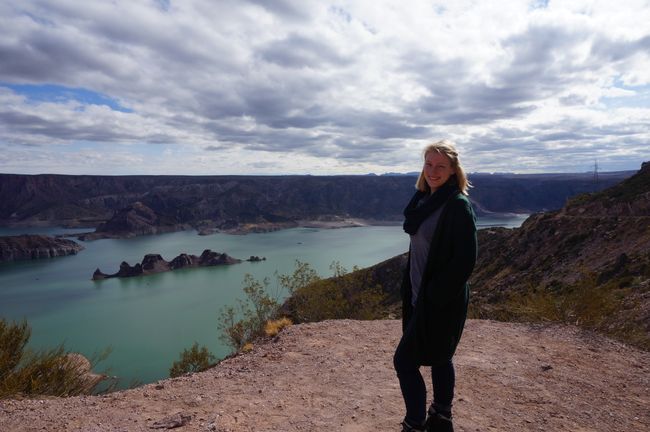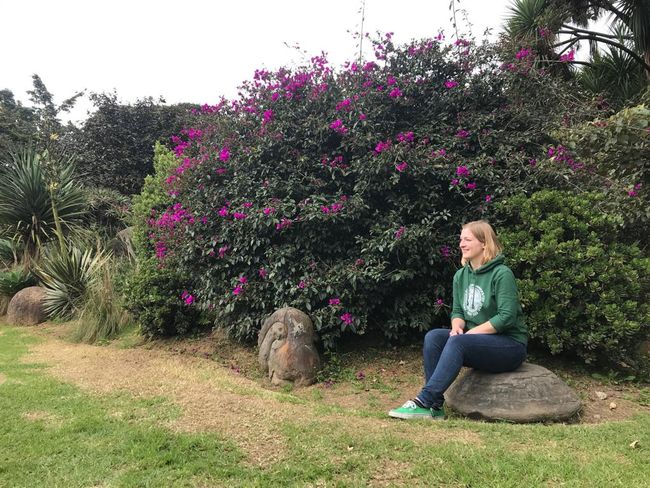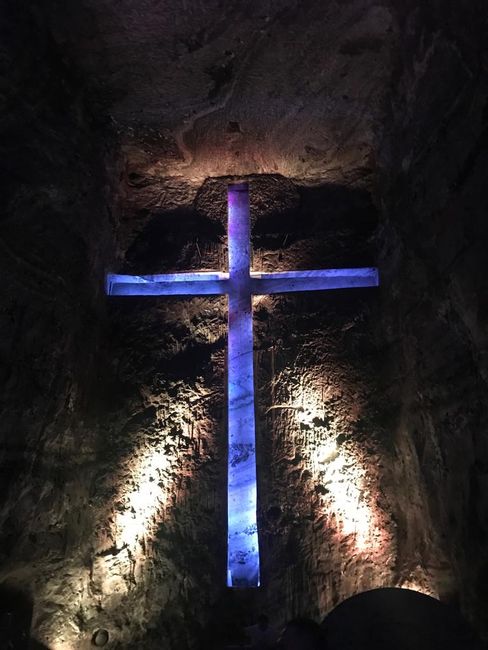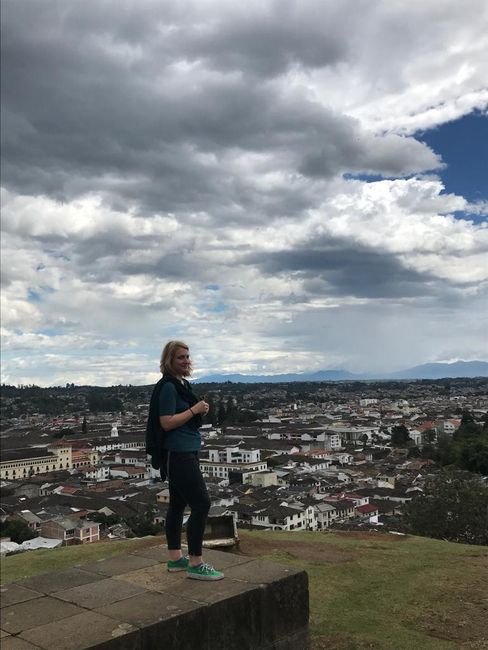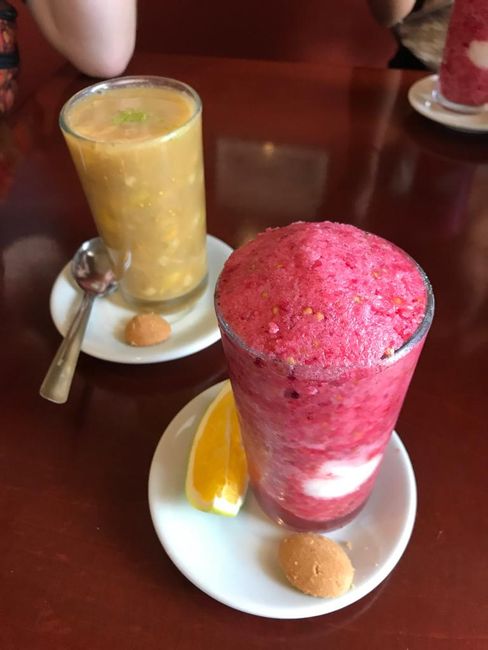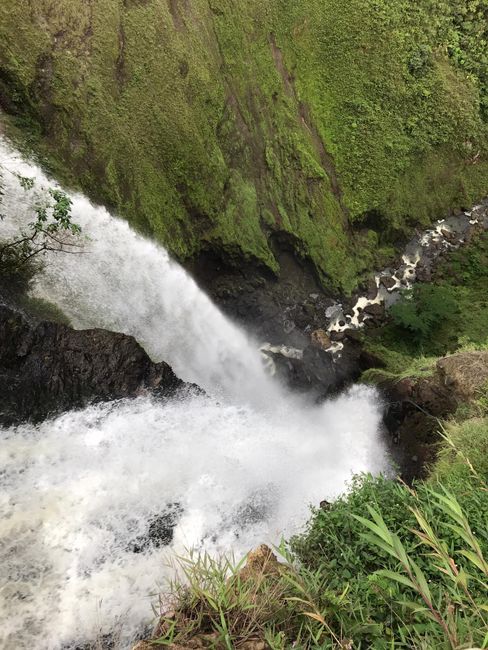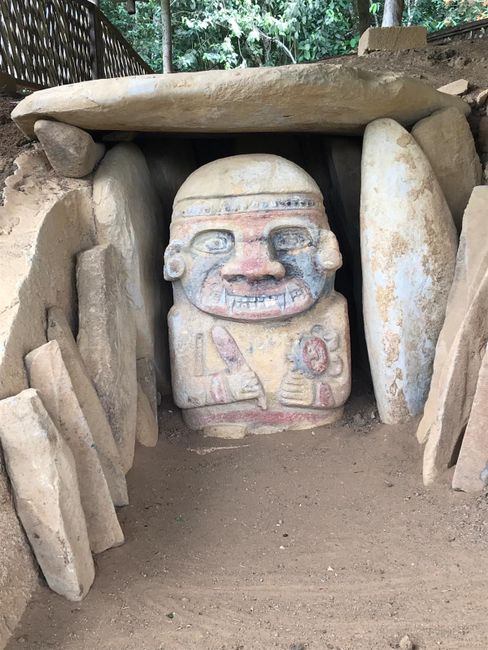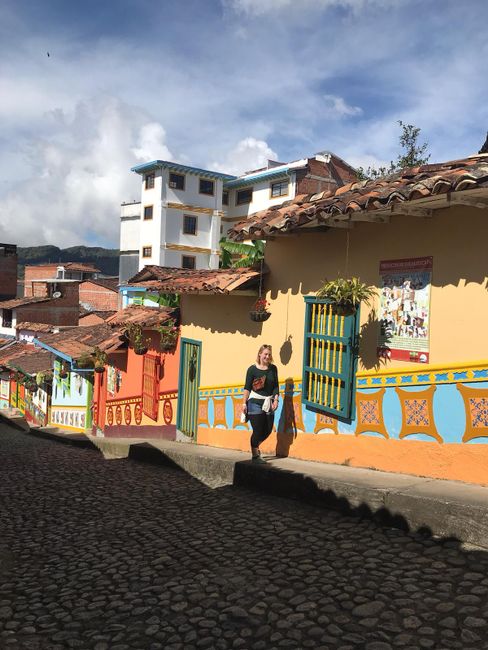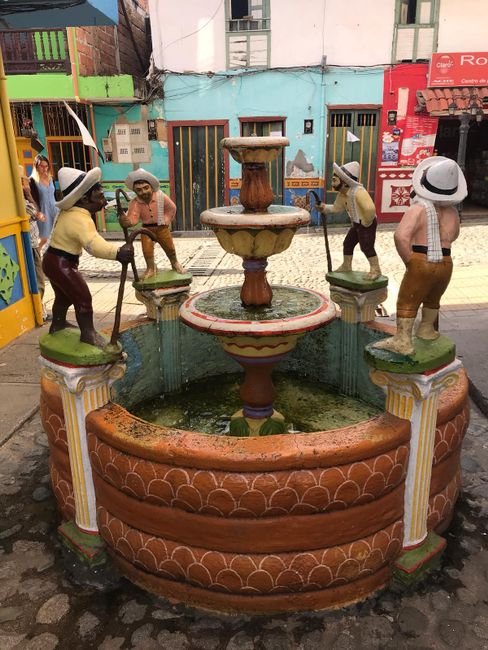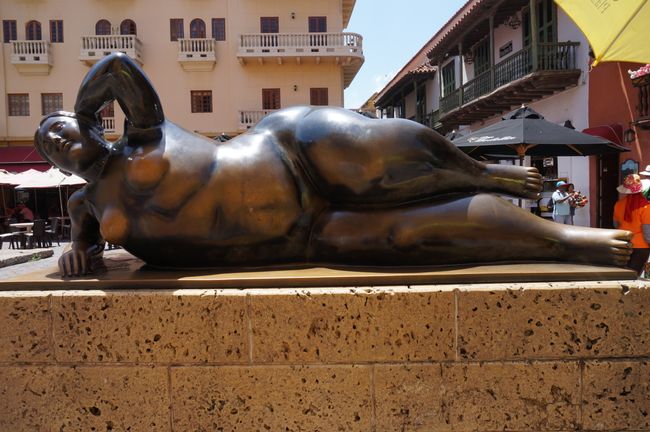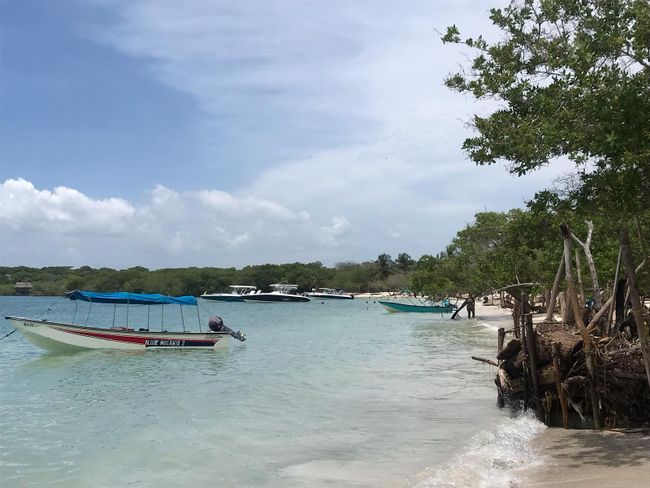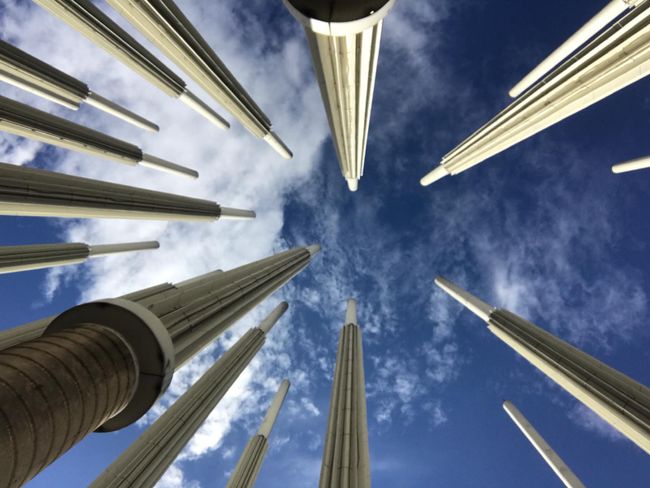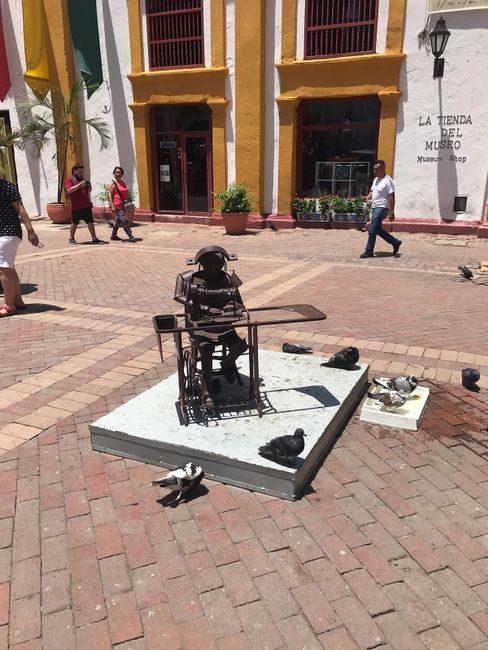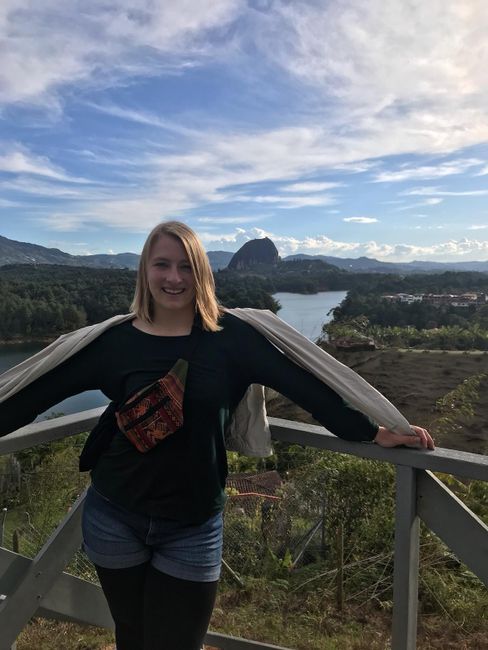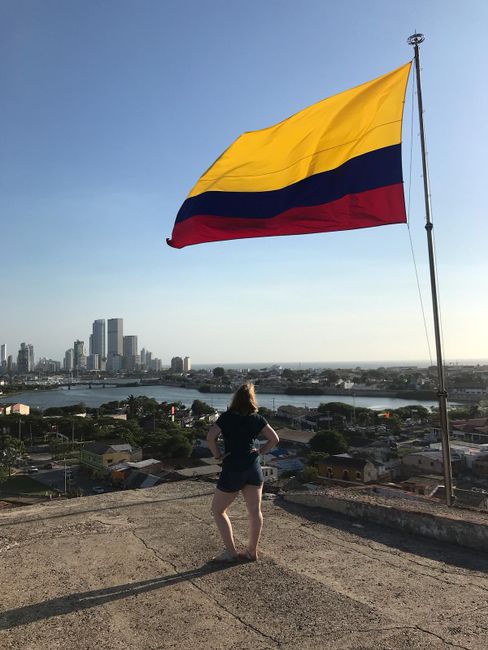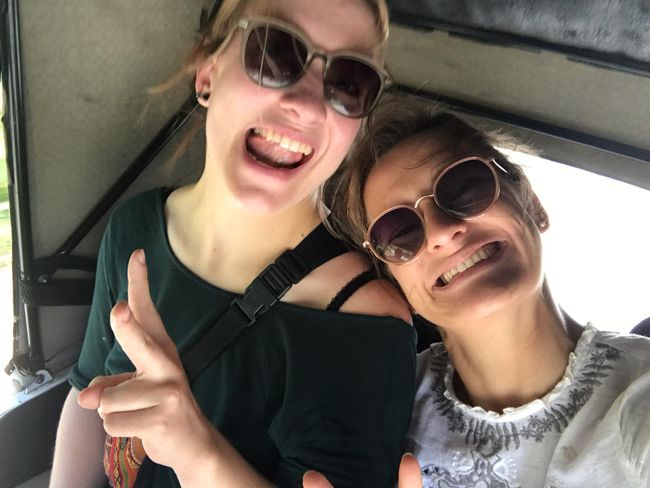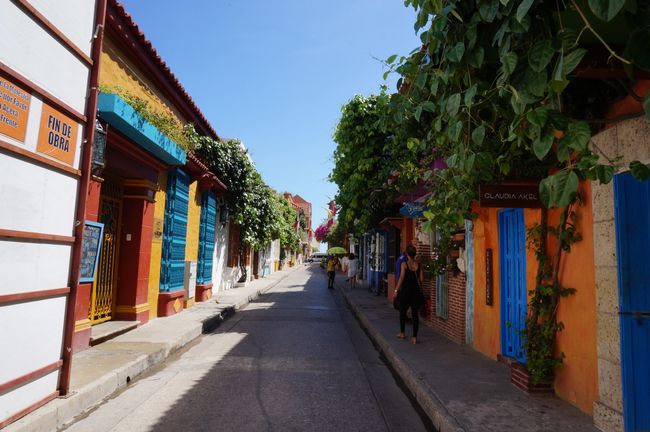Salsa, Cumbia and Colombia!
प्रकाशित: 14.08.2019
बातमीपत्राचे सदस्य व्हा
GERMAN
My trip to Colombia started with Eva united in Bogota. After a failed attempt to take an Uber to our hostel, yes Uber is illegal here and we got caught, we took a taxi to our hostel. As always, the trip ended in a price discussion because supposedly there are always airport fees, night rates and other inventions added to the taxi meter prices, so the price is way too high after a half hour detour. The reasons why Uber is booming despite being banned in Colombia are obvious.
Our hostel was located in the historic district of Bogota called 'Candelaria'. We did a rainy city tour, a graffiti tour, visited the Gold Museum and even went to the theater, but we both fell asleep from time to time. We still don't know if the play (Woyzeck by Büchner) hardly has any plot or if we just didn't understand it because of our Spanish skills.
From the 'Candelaria', Monserrat can be reached by teleferico and funicular, and that's where we really became aware of the size of the city. For comparison: Candelaria is about the size of Jena, and all of Bogota is about the size of Berlin, Paris, and Rome combined.
In order to see more of the actual Bogota, we made a trip to the Botanical Garden, to the Sunday market in Usaquen, and to a restaurant in Chapinero. Finally, we visited the salt cathedral and the center of the small town of Zipaquirá. Just the way back within the city took a whole hour.
From the big capital, we took the night bus to Popayan, where we were welcomed on the street with the words 'Bienvenidos a Colombia. Bienvenidos a Popayan, la ciudad blanca!' Due to the many white houses, Popayan is known as 'la ciudad blanca', the white city. Compared to Bogota, Popayan is more provincial and can be explored within a day. Alice, a former classmate of Eva, introduced us to some of her local friends who showed us the city. There are allegedly so many different fruits in Colombia that you can try a different fruit every day for two years. Here in Popayan, we tried two fruit drinks, a kind of smoothie frappé called 'Salpicón payanes' and the corn smoothie 'champús', which reminded us of the corn beer 'chicha' brewed in Bogota. We also had a type of corn chips called 'Carantanta' as a side dish.
We continued our journey to San Augustin by bus via a very winding gravel road. On the way to the hostel, we were stopped by the police. Again. No, we hadn't taken an illegal Uber, we were on foot. But this time it wasn't the traffic police, but the tourist police, who were giving a French tourist a tour to a finca and took us along. After visiting the finca, one of the policemen organized a horseback riding tour of three important archaeological sites for us and drove us to our hostel. The next day we went on the horse ride, even though our policeman's friend had the flu. He had sent his horses and a friend of his, who gave us a tour in a flawless, clear Spanish. Our guide had a friend with a car who could drive us to three famous waterfalls in the region, so we ended up hopping from waterfall to waterfall with the friend of the friend of the policeman's friend. Yes, San Augustin is a village. On our last day, we visited the most famous archaeological excavation site. We were told that three hours are enough to explore the park, but we had to hurry to walk through the whole park.
After the rather cold weather in Bogota, we were finally welcomed with warm weather in Cali, our next stop. Like Bogota, the big city only has a small tourist center. Cali is known for three things: the sugar cane industry, the Netflix series 'Narcos' regarding the Cali cartel, and for salsa. Salsa the dance, not the sauce. Although, according to our tour guide, the dance was named after the sauce. After a crash course in our hostel, we went to a salsa party with Luisa, the sister of a friend from Buenos Aires. The initially rather empty club gradually filled up, and more and more couples dared to take to the dance floor until it was filled with spinning, swaying, and dancing couples.
Our journey then took us to Medellin, the site of Pablo Escobar's former drug cartel. We even did a tour related to that, but since we hadn't seen the series, the tour was rather unspectacular for both of us. However, the free walking tour in the historic center was all the better, as it also touched on the topic but brought it into the context of today's situation and the cityscape. For example, our tour guide told us that there are four opinions about Pablo Escobar. The first opinion, which is also his opinion, in which Pablo Escobar is seen as a criminal. The second opinion, mainly held by people who owe Pablo a house or money, sees him as a generous person. The third opinion, mainly held by young people in relation to the houses and money gifts, sees Pablo Escobar as a kind of Robin Hood. The fourth opinion, no or a neutral opinion, held mainly by people who don't want to think about it. The tour actually motivates me to maybe watch the series after all. In fact, the drug market is bigger than ever nowadays. However, control by Colombian authorities is difficult because the largest market is abroad. Nowadays, Medellin is fighting to break down the reputation of being one of the most dangerous cities and to be seen independently of the context of Pablo. This is why many bizarre metal figures have been set up in Medellin. In the statues by the artist Fernando Botero, the proportions are changed. For example, a very large horse with wide legs has a very small head.
The last and at the same time most touristy stop in Colombia was the pirate city of Cartagena with its sweet UNESCO-protected historic center. Located on the Caribbean coast, we didn't miss the historic slavery tour or island hopping. Cumbia was invented here during slavery times. It is a dance with European-Spanish influences and African-influenced music. Today, Cumbia is one of the most listened to music genres in Latin America, with music groups from Mexico, Argentina, and the Andean countries.
In general, if Colombia were a three-course menu, we would have only tried the appetizer. Two weeks are enough to get an impression of the country, but also to get an impression of what else we could have seen.
In fact, I'm already back in Europe, but I promise I will still write the blog post about Panama, even though it's late.
Best regards,
Dory
ENGLISH
My Colombia journey started united with Eva in Bogota. After a failed attempt to take an Uber to our hostel, yes it is illegal here and we got caught, we took a taxi to our hostel. As always, the trip ended in a price disagreement because supposedly there are always airport fees, night rates and other inventions added to the taxi meter prices, so the price is way too high after a half hour detour. The reasons why Uber is booming despite the ban are obvious.
Our hostel was located in the historic quarter of Bogota called 'Candelaria'. We participated in a rainy city tour, a graffiti tour, visited the Gold Museum and even went to the theater, but we both fell asleep from time to time. We still don't know if the play (Woyzeck by Büchner) hardly has any plot or we just didn't understand everything because of our poor knowledge of Spanish.
From the 'Candelaria', Monserrat can be reached by teleferico and funicular, and that's where we really became aware of the size of the city. For comparison: Candelaria is about the size of Jena, and all of Bogota is about the size of Berlin, Paris, and Rome combined.
In order to see more of the actual Bogota, we made a trip to the Botanical Garden, to the Sunday market in Usaquen, and to a restaurant in Chapinero. Finally, we visited the salt cathedral and the center of the small town of Zipaquirá. The way back within the city alone took a whole hour.
From the big capital, we took the night bus to Popayan. We were welcomed on the street with the words 'Bienvenidos a Colombia. Bienvenidos a Popayan, la ciudad blanca!' Due to the many white houses, Popayan is known as 'la ciudad blanca', the white city. Compared to Bogota, Popayan is more provincial and easy to explore within a day. Alice, a former classmate of Eva, introduced us to some of her local friends who showed us the city. There are allegedly so many different fruits in Colombia that you can try a different fruit every day for two years. Here in Popayan, we tried two fruit drinks, a kind of smoothie frappé called 'Salpicón payanes' and a corn smoothie called 'champús', which reminded us of the corn beer 'chicha' brewed in Bogota. As a side dish, we ate some kind of corn crisp called 'Carantanta'.
We continued our journey by bus via a very winding gravel road to San Augustin. On the way to the hostel, we were stopped by the police. Again. No, we hadn't taken an illegal Uber, we were on foot. But this time it wasn't the traffic police, but the tourist police, who were giving a French tourist a tour to a finca and took us along. After visiting the finca, one of the policemen organized a horseback riding tour of three major archaeological sites for us and drove us to our hostel. The next day we went on the horse ride, even though our policeman's friend had the flu. He had sent his horses and a friend of his, who gave us a tour in a flawless, clear Spanish. Our guide had a friend with a car who could drive us to three famous waterfalls in the region, so we ended up chugging from waterfall to waterfall with the friend of the friend of the policeman's friend. Yes, San Augustin is a village. On our last day, we visited the most famous archaeological excavation site. We were told that three hours is enough to explore the park, but we had to hurry to really walk through the whole park.
After the rather cold weather in Bogota, our next stop Cali finally welcomed us with warm weather. Like Bogota, the big city only has a small tourist center. Cali is known for three things: the sugar cane industry, the Netflix series 'Narcos' regarding the former Cali cartel, and for salsa. Salsa the dance, not the sauce. Although, according to our tour guide, the dance was named after the sauce. After a crash course in our hostel, we went to a salsa party with Luisa, the sister of a friend from Buenos Aires. The initially rather empty club gradually filled up, and more and more couples dared to take to the dance floor until it consisted only of spinning, swaying, and dancing couples.
From one Narcos venue to the next, our way led us on to Medellin. The site of the former drug cartel of Pablo Escobar. We even did a tour related to that, but since we didn't see the series, the tour was rather unspectacular for both of us. All the better was the free walking tour in the historic center, which also covered the topic but brought it into the context of today's situation and the cityscape. For example, our tour guide told us that today there are four opinions about Pablo Escobar. The first and at the same time his opinion is that Pablo Escobar is a criminal. The second opinion, mainly held by people who owe Pablo a house or money, sees him as a generous person. The third opinion, mainly held by young people with regard to the houses and money gifts, sees Pablo Escobar as a kind of Robin Hood. The fourth opinion, namely no or a neutral opinion, is mainly held by people who don't want to think about it. The tour even motivates me to maybe watch the series after all. In fact, the drug market today is bigger than ever. However, as the largest market is abroad, it is difficult for Colombia to control it. Nowadays, Medellin is fighting to break down the reputation of being one of the most dangerous cities and to be seen independently of the context of Pablo. Therefore, many bizarre metal figures have been set up in Medellin. The artist Fernando Botero changed the proportions of the statues. For example, a very wide horse with large wide legs has a very small head.
The last and at the same time most touristy station in Colombia was the pirate city of Cartagena with its sweet UNESCO-protected historic center. Situated on the Caribbean coast, we didn't miss the historic slavery tour or island hopping. Cumbia was invented here during slavery times. It is a dance with European-Spanish influences and African-influenced music. Today, Cumbia is one of the most listened to music genres in Latin America, with music groups from Mexico, Argentina, and the Andean countries.
In general, if Colombia were a three-course menu, we would only have tried the appetizer. Two weeks are enough to get an impression of the country, but also to get an impression of everything else we could have seen.
In fact, I'm already back in Europe, but I promise I will still write the blog post about Panama, even though it's late.
Best regards,
Dory
बातमीपत्राचे सदस्य व्हा
उत्तर द्या
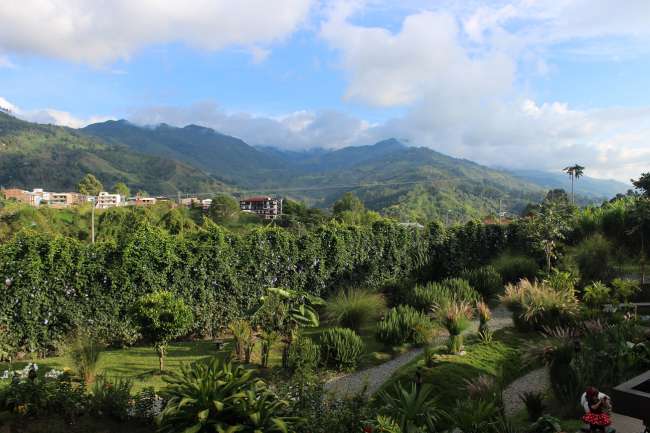
प्रवास अहवाल कोलंबिया

